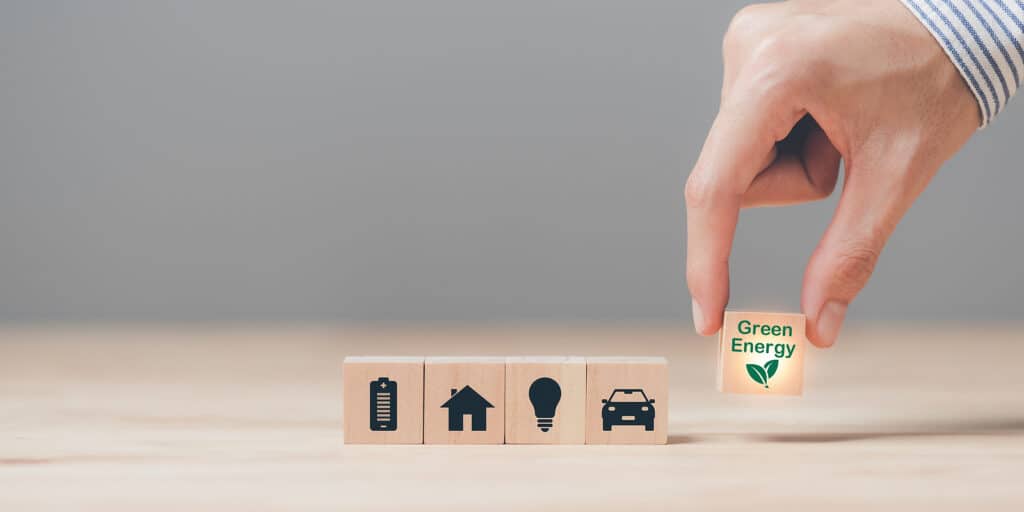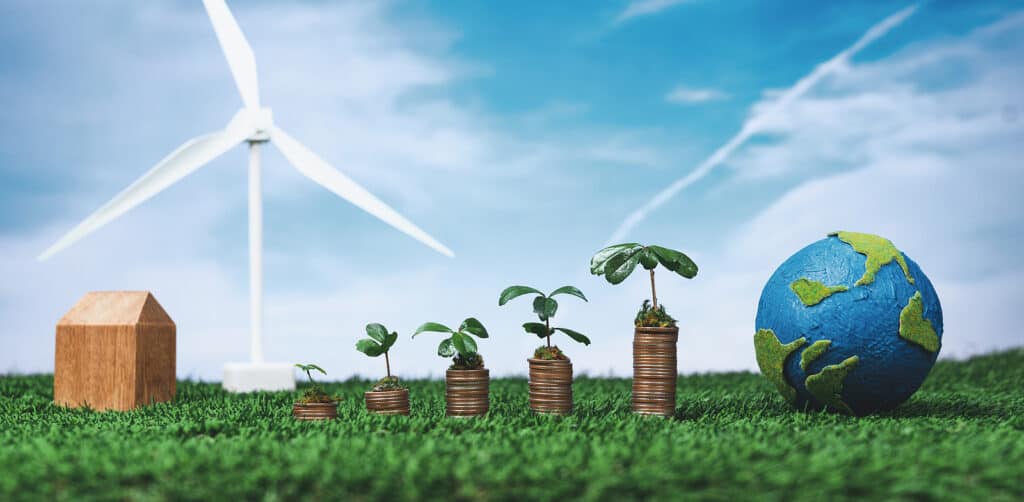Energy Conservation Technologies: Leading Innovations for a Sustainable Future
As a homeowner striving for a sustainable future, I understand the significance of energy conservation technologies in tackling climate change. By embracing these innovative solutions, I can make a positive impact while enjoying the benefits of reduced energy consumption and lower utility bills. One of the ways I can contribute is by investing in energy-efficient appliances, including refrigerators, washing machines, and air conditioners. These cutting-edge appliances are designed to minimize energy usage without compromising on performance.
By opting for these environmentally-friendly alternatives, I can actively reduce my carbon footprint and take a step towards a greener lifestyle. Moreover, these energy-efficient appliances are designed to be cost-effective in the long run, allowing me to save money on my monthly utility bills. By incorporating energy conservation technologie into my home, I am not only improving my own financial situation but also playing my part in creating a sustainable future for generations to come.
Understanding Energy Conservation
Before delving into specific technologies, let's define energy conservation. Essentially, it involves reducing energy consumption through efficient use and avoiding unnecessary energy waste. This practice benefits not only the environment, but it also reduces energy costs, making it a win-win strategy for individuals and businesses alike.
The Importance of Energy Conservation
Energy conservation is not just a buzzword; it is a necessity. As the world grapples with the impacts of climate change, the importance of sustainable energy consumption cannot be overstated. By using less energy, we can reduce our greenhouse gas emissions, decrease our dependence on finite fossil fuels, and contribute to a healthier, more sustainable planet.
Moreover, on an individual level, energy conservation can lead to significant cost savings, reducing household or business energy bills. For nations, energy conservation can enhance energy security, reduce energy imports, and create green jobs, driving sustainable economic development.

Exploring Current Energy Conservation Technologies
The pursuit of energy conservation has led to the development and implementation of various technologies. Here are some of the most impactful ones:
- LED Lighting: LED lights offer significant energy savings compared to traditional incandescent bulbs. They are highly efficient, using around 75% less energy and lasting much longer. LED lighting is widely used in residential, commercial, and outdoor settings, contributing to significant energy conservation.
- Energy-Efficient Appliances: Appliances with the Energy Star certification are designed to consume less energy while maintaining performance. Energy-efficient refrigerators, washing machines, air conditioners, and televisions help households and businesses reduce their energy consumption and lower utility bills.
- Smart Thermostats: Smart thermostats revolutionize heating and cooling systems by enabling precise temperature control and energy optimization. These devices can be remotely programmed and learn user preferences, automatically adjusting temperature settings to conserve energy when spaces are unoccupied or unnecessary.
- Solar Panels: Solar panels not only generate renewable energy but also promote energy conservation. By harnessing sunlight and converting it into electricity, solar panels reduce reliance on traditional power sources. Solar panels can be installed on residential and commercial buildings, enabling individuals and businesses to generate their own clean energy and reduce their carbon footprint.
- Energy Management Systems: Advanced energy management systems integrate various technologies and data analytics to optimize energy usage in buildings. These systems monitor energy consumption, identify inefficiencies, and provide actionable insights to reduce energy waste and enhance overall efficiency.
- Insulation and Weatherization: Proper insulation and weatherization techniques improve a building's energy efficiency by reducing heat transfer and minimizing air leaks. By preventing heat loss or gain, buildings require less energy for heating and cooling, resulting in energy conservation and cost savings.
- Heat Pumps: Heat pumps are energy-efficient heating and cooling systems that transfer heat between indoor and outdoor environments. They use electricity to move heat rather than generating it directly, making them highly efficient and environmentally friendly alternatives to traditional heating and cooling systems.
- Energy Storage Systems: Energy storage technologies, such as batteries, enable the efficient storage of excess energy generated from renewable sources. By storing energy during periods of low demand and releasing it during peak times, energy storage systems contribute to a more balanced and sustainable energy grid.

Cutting-edge Innovations in Energy Conservation
As technology progresses, innovative solutions are emerging to enhance energy conservation efforts. Here are some groundbreaking advancements that are shaping the field:
- Energy Storage Systems: Energy storage systems, like Tesla's Powerwall and advanced lithium-ion batteries, enable the efficient storage and retrieval of excess energy. These systems allow users to store energy generated during off-peak hours and utilize it during times of high demand, reducing strain on the grid and promoting renewable energy integration.
- Building Energy Management Systems (BEMS): BEMS leverage the power of artificial intelligence (AI) and Internet of Things (IoT) devices to optimize energy usage in buildings. These systems monitor and control various building systems, such as HVAC (heating, ventilation, and air conditioning) and lighting, ensuring energy efficiency while maintaining occupant comfort.
- Smart Grids: Smart grids employ advanced digital communication technologies to detect and respond to real-time changes in energy supply and demand. These intelligent grids enable efficient energy distribution, load balancing, and integration of renewable energy sources. By facilitating two-way communication between utilities and consumers, smart grids promote energy conservation and enhance grid stability.
- Energy-Efficient Data Centers: Data centers are notorious energy consumers. To address this, cutting-edge technologies are being developed to optimize their energy usage. Innovations include improved cooling techniques, energy-efficient server designs, virtualization, and advanced workload management using machine learning algorithms. These advancements reduce energy consumption and promote sustainability in the rapidly expanding digital infrastructure sector.
- Energy Harvesting Technologies: Energy harvesting technologies aim to capture and utilize ambient energy from the environment. These technologies convert sources such as solar radiation, kinetic motion, and temperature gradients into usable electrical energy. Energy harvesting has diverse applications, including powering wireless sensor networks, wearable devices, and low-power electronics, reducing the reliance on traditional power sources.
- Internet of Things (IoT) for Energy Management: IoT-based energy management systems allow for real-time monitoring and control of energy consumption in various contexts, including homes, offices, and industries. By collecting and analyzing data from connected devices and sensors, IoT-enabled energy management systems identify inefficiencies, optimize energy usage patterns, and provide insights for effective conservation strategies.
- Artificial Intelligence (AI) for Energy Optimization: AI algorithms and machine learning techniques are being leveraged to optimize energy systems. These technologies enable predictive analytics, demand response optimization, energy load forecasting, and intelligent energy management. By continuously learning from data patterns, AI-based systems can identify opportunities for energy conservation and recommend optimal energy usage strategies.
The Future of Energy Conservation Technologies
The future of energy conservation technology holds great promise as advancements continue to emerge. Here are a few upcoming trends that are expected to shape the landscape:
- Advanced Insulating Materials: Innovative insulating materials, such as aerogel insulation and vacuum insulation panels, are poised to enhance building energy efficiency. These materials offer superior thermal insulation properties, minimizing heat transfer and reducing the need for excessive heating or cooling.
- Wireless Power Transmission: Wireless power transmission technologies aim to transmit electricity without the need for traditional wired infrastructure. This approach has the potential to reduce energy loss during transmission and improve overall efficiency. Wireless charging for electric vehicles and wireless power transfer for electronic devices are areas of active development.
- Smart Cities: The concept of smart cities integrates cutting-edge technologies like the Internet of Things (IoT), artificial intelligence (AI), and Big Data to optimize energy consumption on a city-wide scale. Smart grids, smart buildings, intelligent transportation systems, and efficient public lighting are just a few examples of how smart cities can revolutionize energy conservation.
- Energy Harvesting Devices: Energy harvesting technologies seek to capture and utilize ambient energy from the environment to power electronic devices. This can involve capturing energy from sources like solar, wind, vibration, or thermal gradients. Energy harvesting holds immense potential for powering low-energy devices and reducing reliance on batteries or wired power sources.
- Advanced Energy Management Systems: Sophisticated energy management systems will integrate real-time data analytics, AI algorithms, and automation to optimize energy usage in homes, buildings, and industries. These systems will intelligently control energy-consuming devices, adjust energy loads based on demand patterns, and identify energy-saving opportunities.
- Smart Grids: Smart grid technologies will enhance the efficiency, reliability, and flexibility of electricity distribution. With bidirectional communication between power generation, transmission, and consumption points, smart grids enable real-time monitoring, load balancing, and integration of renewable energy sources.
- Energy-Efficient Electronics: The development of energy-efficient electronics will continue to play a pivotal role in energy conservation. From low-power processors and displays to energy-conscious sensors and appliances, advancements in electronic components will contribute to reducing overall energy consumption.
Smart Windows for Energy Efficiency
Smart windows, also known as electrochromic windows, are a fascinating development in the realm of energy conservation. These windows can change their transparency based on electrical signals, helping to manage the amount of heat and light that enters a building. This can significantly reduce heating, cooling, and lighting costs. Currently, they're more commonly seen in high-end commercial buildings, but as the technology matures, we can expect to see more widespread residential use.
Advanced HVAC Systems
Heating, ventilation, and air conditioning (HVAC) systems play a significant role in energy consumption within residential and commercial buildings. As the need for energy-efficient solutions grows, innovations in HVAC technology are revolutionizing the industry. Here are some advanced HVAC systems driving energy conservation:
- Geothermal Heat Pumps: Geothermal heat pumps utilize the stable temperature of the earth to provide efficient heating and cooling. These systems circulate fluid through underground pipes, absorbing heat from the ground during winter and dissipating heat during summer. By harnessing renewable geothermal energy, geothermal heat pumps can achieve energy savings of up to 60% compared to traditional HVAC systems.
- Variable Refrigerant Flow (VRF) Systems: VRF systems offer precise temperature control and energy efficiency by modulating refrigerant flow based on heating and cooling demands. These systems can simultaneously cool and heat different zones within a building, optimizing energy usage. VRF systems utilize advanced inverter technology, allowing for smooth and efficient operation while minimizing energy waste.
- Demand-Controlled Ventilation (DCV): DCV systems adjust the ventilation rates based on real-time occupancy and air quality data. By continuously monitoring indoor conditions, DCV systems optimize the flow of fresh air, ensuring an adequate supply while minimizing unnecessary energy consumption. This technology is particularly beneficial in spaces with varying occupancy levels, such as offices, schools, and commercial buildings.
- High-Efficiency Air Filters and Filtration Systems: Advanced air filters and filtration systems remove contaminants and particles from the air, improving indoor air quality while enhancing energy efficiency. These systems reduce the strain on HVAC equipment by maintaining clean air passages and prolonging the lifespan of components. Additionally, they contribute to occupant health and comfort by minimizing allergens, pollutants, and airborne diseases.
- Smart HVAC Controls: Smart HVAC controls integrate IoT technology, allowing for intelligent and automated management of HVAC systems. These controls optimize energy usage by analyzing occupancy patterns, outdoor weather conditions, and other variables to adjust temperature settings and ventilation rates accordingly. Smart HVAC controls provide real-time monitoring, remote access, and data analytics capabilities, enabling users to track energy consumption, identify inefficiencies, and make data-driven decisions for energy conservation.
Digital Twin Technology for Energy Conservation
Digital twin technology has emerged as a powerful tool for optimizing energy conservation efforts in various sectors. By creating virtual replicas of physical entities, digital twins enable detailed simulations, analysis, and improvements in energy performance. Here's how digital twin technology is revolutionizing energy conservation:
- Building Energy Optimization: Digital twins of buildings provide a holistic view of their energy consumption patterns and allow for real-time monitoring and analysis of energy usage. By integrating data from sensors, weather conditions, and occupant behavior, digital twins simulate the impact of design modifications, system upgrades, or energy management strategies on energy efficiency. This empowers building owners and operators to identify areas for improvement and implement energy-saving measures.
- Predictive Maintenance: Digital twins can monitor the performance of energy systems and predict potential issues before they occur. By leveraging data from sensors and historical patterns, digital twins can detect inefficiencies, malfunctions, or degradation in equipment performance. This proactive approach enables timely maintenance and optimization, ensuring optimal energy efficiency and reducing the risk of costly breakdowns.
- Energy Grid Management: Digital twins of energy grids provide comprehensive insights into energy generation, distribution, and consumption. By analyzing real-time data from sensors, energy companies can optimize grid operations, balance energy supply and demand, and identify areas of energy wastage. Digital twins enable predictive modeling, allowing for proactive load management and integration of renewable energy sources to maximize energy conservation.
- Simulation and Scenario Analysis: Digital twins enable virtual experimentation and scenario analysis, reducing the need for costly physical prototypes or trial-and-error approaches. By simulating various energy conservation strategies, such as daylighting, HVAC system optimizations, or renewable energy integration, digital twins facilitate data-driven decision-making and allow stakeholders to evaluate the potential impact of different interventions on energy consumption and cost savings.
- Occupant Engagement: Digital twins can engage building occupants by providing real-time feedback on their energy usage patterns. With the help of energy dashboards and personalized recommendations, occupants can actively participate in energy conservation efforts, adjusting their behaviors to reduce energy waste. Digital twins create awareness and promote energy-conscious behaviors, fostering a culture of sustainability.
LED Lighting and Smart Thermostats Leading the Energy-Saving
Energy-saving inventions have played a significant role in addressing the global challenge of energy efficiency and reducing greenhouse gas emissions. Two notable energy-saving inventions are LED lighting and smart thermostats.
LED Lighting: Light-emitting diode (LED) technology has revolutionized the lighting industry by offering a highly efficient and long-lasting alternative to traditional incandescent and fluorescent bulbs. LEDs consume significantly less energy to produce the same amount of light, resulting in substantial energy saving inventions. Compared to incandescent bulbs, LEDs can reduce energy saving technologies in industries consumption by up to 75% and have a lifespan up to 25 times longer. Additionally, LED lights emit light in a specific direction, reducing wasteful scattering and enabling more focused illumination. The widespread adoption of LED lighting has not only reduced energy demand but also contributed to lower electricity bills for consumers and reduced maintenance costs due to their extended lifespan.
Smart Thermostats: Smart thermostats are innovative devices that optimize heating and cooling systems in homes and buildings, leading to best energy saving technology in buildings and increased comfort. These thermostats use advanced sensors and algorithms to learn the occupants' preferences and automatically adjust temperature settings based on factors like occupancy, time of day, and weather conditions.
Conclusion
In conclusion, as a homeowner committed to a sustainable future, I am excited about the vast potential of energy conservation technologies. From energy-efficient appliances and LED lighting to smart thermostats and solar panels, these innovations empower me to make a positive impact on the environment while enjoying the benefits of reduced energy consumption and lower utility bills.
By embracing energy conservation technologies, I am actively contributing to the fight against climate change. These technologies not only reduce greenhouse gas emissions but also decrease our reliance on finite fossil fuels. They offer a practical solution to address environmental challenges while improving my financial situation through long-term cost savings.
Sources:
- LED Lighting. (2021, December). U.S. Department of Energy. Retrieved from https://www.energy.gov/energysaver/save-electricity-and-fuel/lighting-choices-save-you-money/led-lighting

